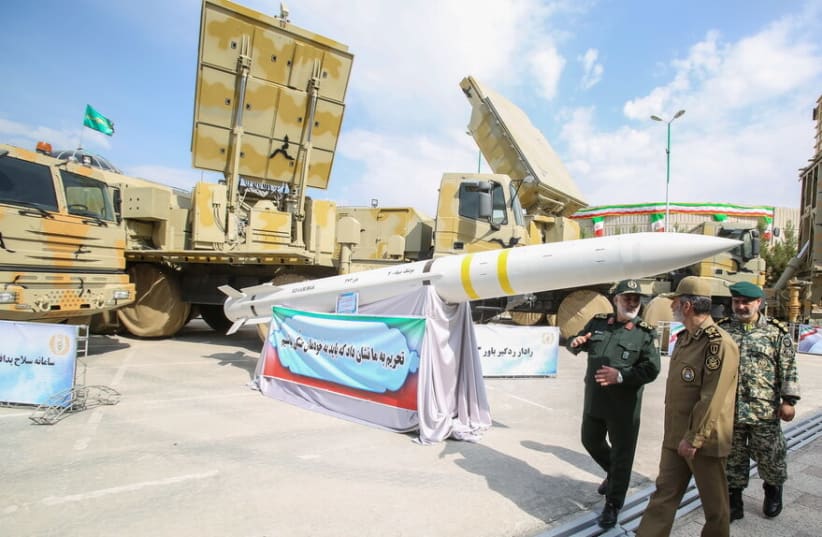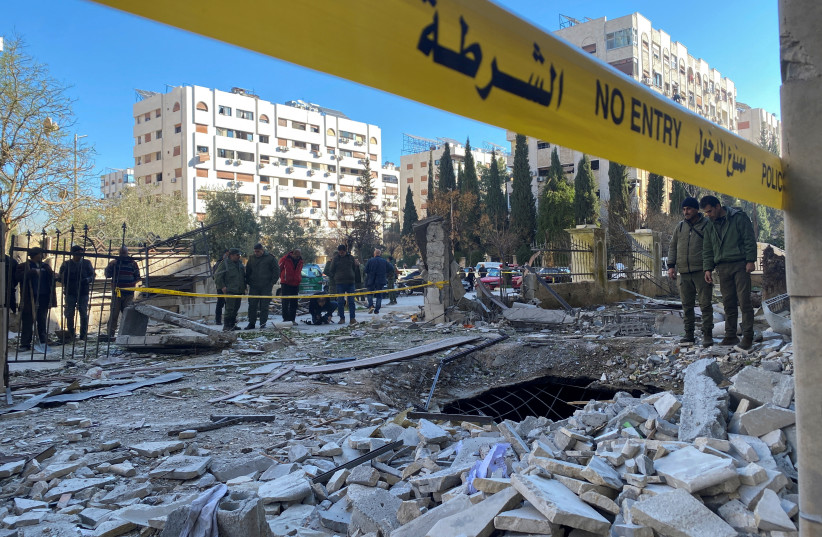Reports that Iran may supply Syria with an air defense system represent a potential new threat in Syria.
This is because Iranian air defense systems can provide cover for other types of Iranian entrenchment in Syria. Iran has tried to move air defense systems to Syria over the last several years. However, recent reports show Tehran is openly announcing that it could send Damascus a system.
Iranian state media made the announcement Friday. It comes amid praise in Iranian media for the Iranian armed forces and IRGC. It also comes as Iran has supplied Russia with drones and there are reports of closer Russia-Iran cooperation. Iran is also continuing to enrich uranium and this is part of the larger Iranian tensions in the region.
Iranian state television said that "Syria needs to rebuild its air defense network and requires precision bombs for its fighter planes.” The report went on to say that “it is very likely that we will witness the supply by Iran of radars and defense missiles, such as the 15 Khordad system, to reinforce Syria's air defenses.”
What are the implications of Iranian air defense systems in Syria?
The announcement has created a buzz on social media among experts, commentators and Iran watchers.
The overall assessment is that this is important for Syria and will increase its air defenses. It has implications for Syria as it does outreach to the region, especially after Bashir al Assad, the regime leader, visited Oman this week. Also, it has implications for Russia’s role in Syria, potentially for Turkey and the US's role, and also Israel’s policy of preventing Iranian entrenchment in Syria.
Abdolrasool Divsallar, a visiting Prof. at the Università Cattolica and Non-Resident Scholar at the Middle East Institute tweeted “Iranian state TV claims Tehran is selling EW and air defense systems to Syria, including 3-Khordad SAMs. There were many considerations in Tehran opposing this decision. Yet seems that finally Tehran is decided. If happens, it will take Iran-Israel confrontation to another level."
Iranian state TV claims Tehran is selling EW and air defense systems to Syria, including 3-Khordad SAMs. There were many considerations in Tehran opposing this decision. Yet seems finally Tehran is decided. If happens, it will take Iran-Israel confrontation to another level. https://t.co/ScAkCCB2CI
— Abdolrasool Divsallar (@Divsallar) February 24, 2023
Other assessments of the news included claims that the system is very capable and that it can detect things out to 150km using radar, and engage targets at 45-75km. The system is mounted on the back of a truck, like other air defense systems. Each truck carried four launchers and the system can supposedly counter numerous threats at the same time. It uses a missile called the Sayyad 3. Some assessments see it as an improvement on the S-300, the Russian-made system.
Russia had said it would provide Syria with the S-300 back in 2018 but it’s not clear if and how the regime has used that system. Syria generally relies on the S-200, Pantsir and other systems that have proven inadequate. This is supposed to represent a “qualitative” kind of support by Iran, increasing Syria’s military abilities much more than in the past. It’s not clear how many air defense systems the regime might get, ostensibly the reports indicate several systems would be sent. It is also not clear if and when they will be delivered or if Iran already tried to deliver them.
Syria hopes earthquakes will attract foreign aid
The Syrian regime has sought to use the earthquake that harmed northwestern Syria as a way to attract more foreign aid and also get around sanctions. It has received support in the region and is making new connections in the Gulf. In addition, the Syrian regime would like to possibly use the aid support as a way to hide deliveries of weapons from places like Iran.
In the past, Iran trafficked weapons to Syria via Iraq and moved the arms to Hezbollah. Iran also tried to fly munitions and systems to places like T-4 base. Iran has also sought to move munitions through Damascus.
The Khordad 15 system was first unveiled in 2019 and Iran boasted at the time that the new system could trace 6 targets at the same time, including jets, drones and other threats.
"Iran will increase its military capabilities to protect its national security and interests, and it will not ask permission from anyone on this matter," said defense minister Amir Hatami at the time.
Iran signed an air defense pact with Syria in 2020. An article at the Washington Institute for Near East Policy noted in 2020 that “on July 8, Syrian defense minister Ali Abdullah Ayoub and Maj. Gen. Mohammad Bagheri, chairman of Iran’s Armed Forces General Staff, signed an agreement in Damascus to significantly expand bilateral military cooperation, especially in the field of air defense. Seeing a dual need to counter aerial threats against Iran and its allies while also undermining the coalition military presence in the Middle East, Tehran has developed a strategic vision that requires effective protection and (in time) denial of airspace. Toward that end, it has repeatedly proposed to augment Iraqi, Lebanese, and now Syrian air defense systems and integrate them with its own network.”
The article by Farzin Nadimi noted at the time that “Iran has a number of S-200, S-75/HQ-2, and 2K12 systems in service back home and has upgraded them over the years, so it could offer to upgrade Syria’s batteries as well. In addition, it could send Assad indigenously developed systems such as the Raad, Tabas, 15th of Khordad, Talash, and 3rd of Khordad.” The 3rd Khordad was used to shoot down a US Global Hawk drone in 2020. “Tehran might also intend to help Syria set up local production/assembly lines for such systems, most likely in underground facilities (similar production capabilities could conceivably be offered to Iraq or even Hezbollah),” the report noted.
“Iran’s longest-range and supposedly most-advanced air defense system, the Bavar-373, is still under development and has yet to enter full-scale production. Iran claims that the system is comparable to an American Patriot missile battery and superior to Russia’s S-300PMU-2, but for now, all it can offer Syria is to deploy an unproven example there for testing and evaluation purposes.”
The implications of Iran’s claims are clear, it wants to show that it can supply Syria with a system that is important and a potential game-changer. However, Iran has exaggerated its support for Syria in the past. Syria has also believed Russia would supply it with systems that have never materialized or had an impact. Iran’s latest claims could also end to be more smoke and mirrors.

